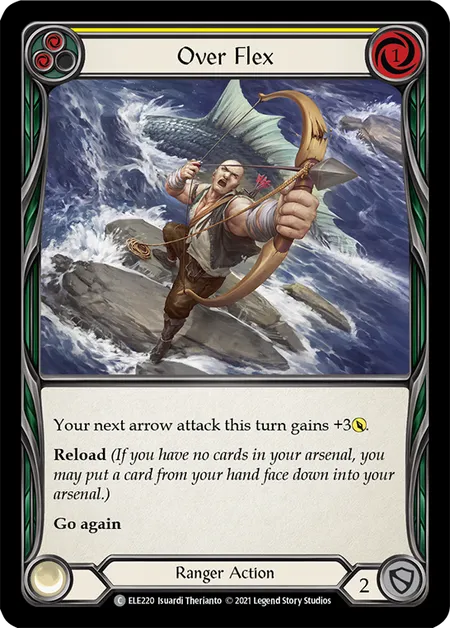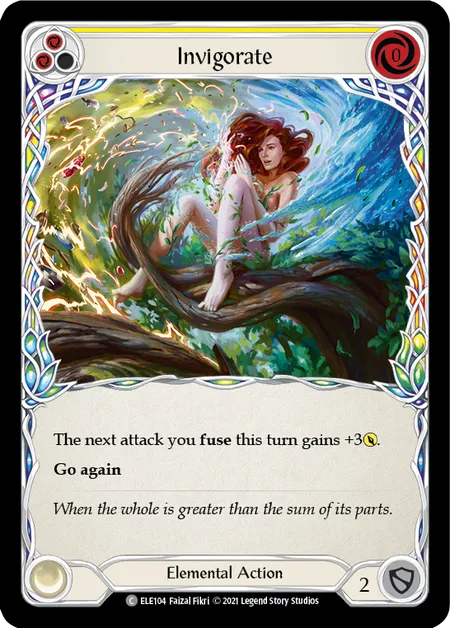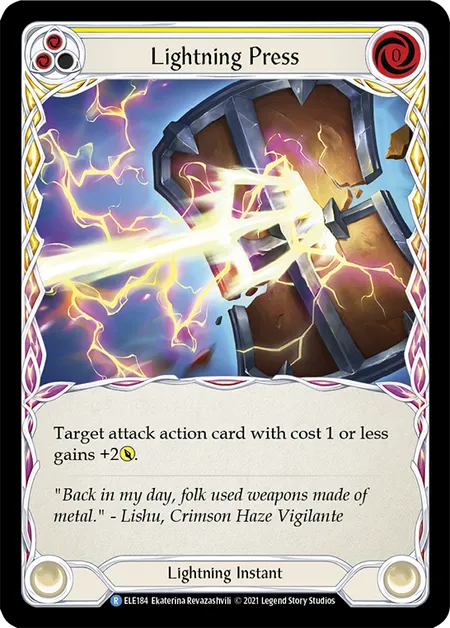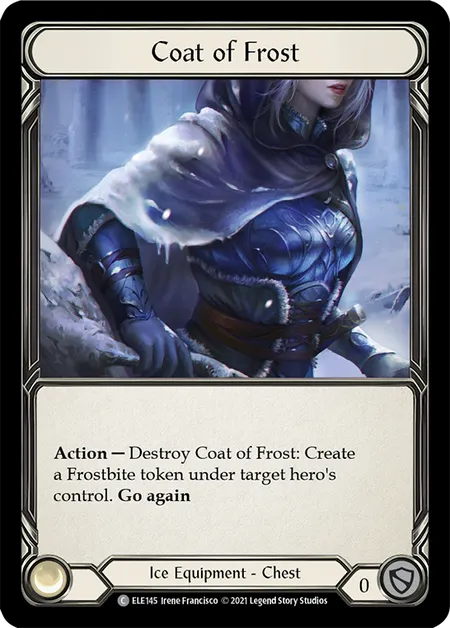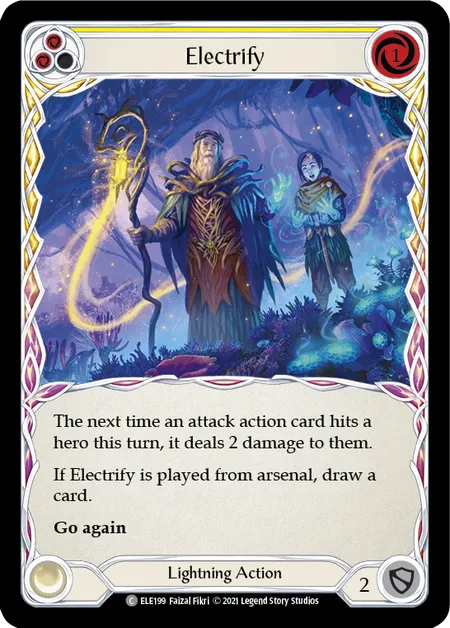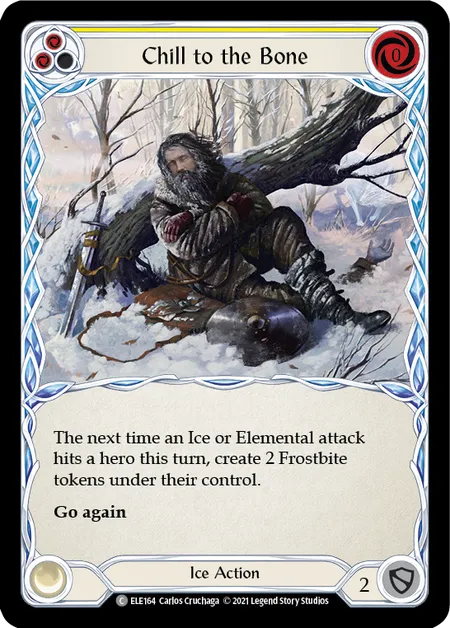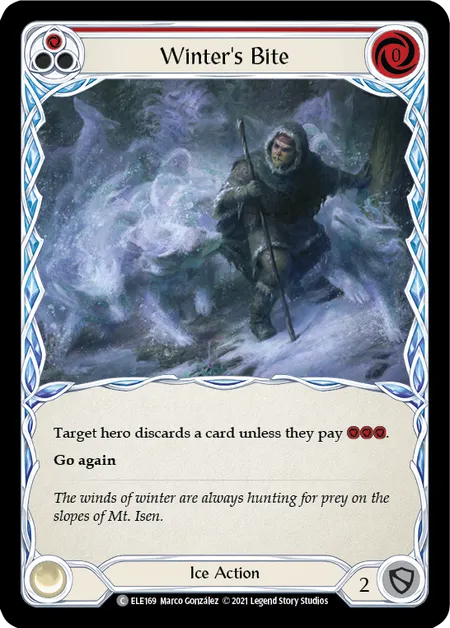As you draft Lexi in Tales of Aria, it is important to keep in mind cards that are useful in particular matchups, especially later on in the draft. Those final picks, 10-15, might seem unimportant, but they could contain very specific cards that can help you win a certain matchup.
I will outline some key cards for each matchup when playing Lexi for all three of your potential opposing heroes. Changing up a few cards here and there can be enough to swing the favourability of a particular matchup when you preboard correctly.
Oldhim
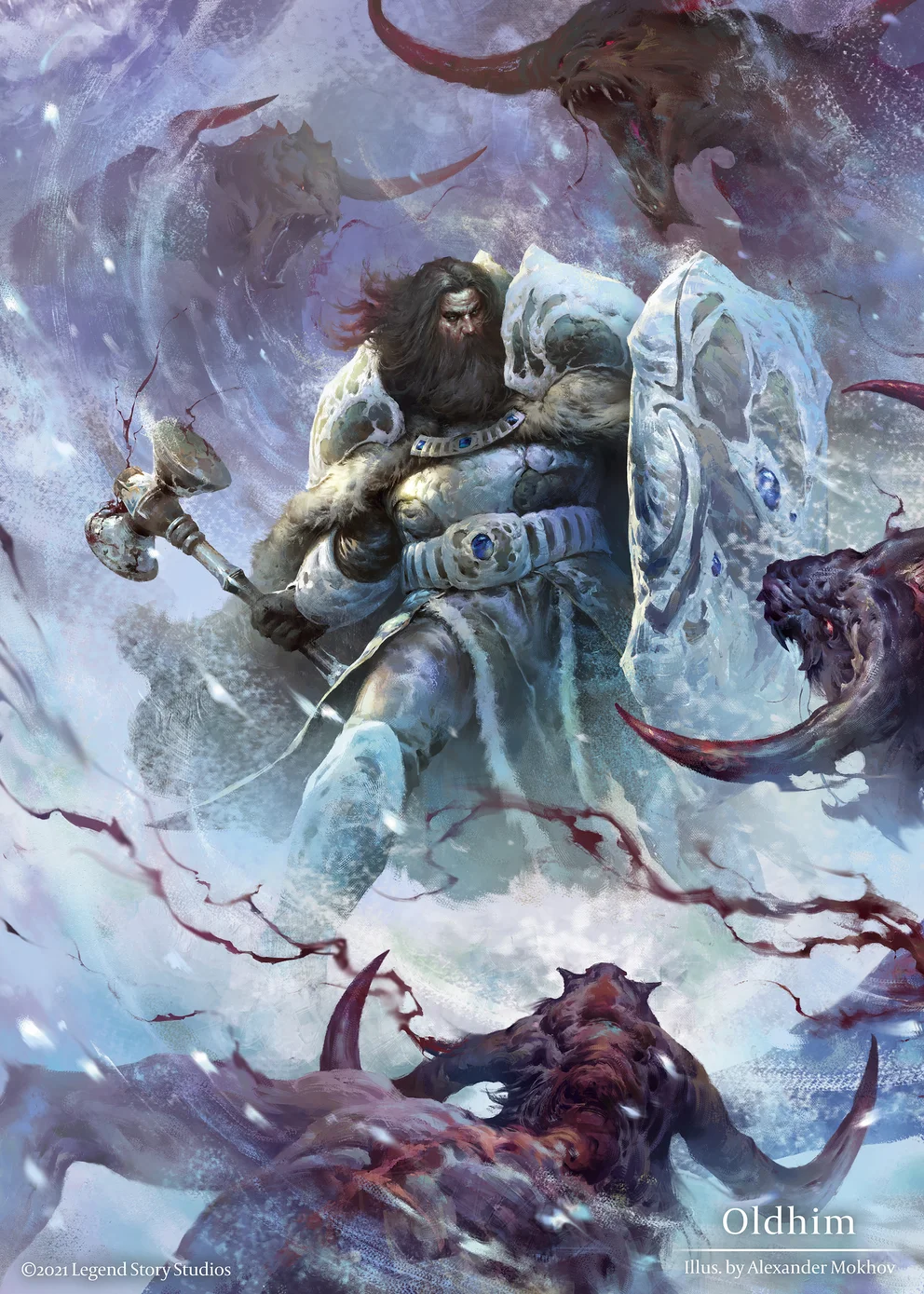
Traditionally, the Ranger versus Guardian matchup could be daunting. Guardian has access to a lot of defensive tools that can hinder your arrow attacks. Also, not having access to a weapon, means there’s an inevitability that you will run out of arrows and be unable to finish a game. Luckily, in the Lexi versus Oldhim matchup, Lexi has a number of tools that can help her push through Oldhim’s defenses. Firstly, we have access to Shiver - granting a dominate to any arrow on demand is extremely powerful. When paired with cards like Over Flex, you have access to setting up big, dominated arrows late game to finish off a defensive Oldhim. Even yellow and blue pitch Over Flexes and Invigorates could be good to pick up late in a draft. These could be the key components for you to build one strong arrow late in the game to finish the Guardian player off.
Using the Lightning side, Lexi has access to damage multiplier cards like Frazzle and Ball Lightning. These cards have an interesting interaction with damage prevention effects. Because they act as a replacement effect, you can actually layer those “plus 1” effects before Oldhim’s hero ability prevention. How does this play out? Let’s say you attack with a yellow Ball Lightning. The defending Oldhim passes on defense and uses the Earth side of his hero ability to prevent the next 2 damage. As the active player, you can layer the order of active player and defending player’s replacement effects - in this case +1 damage from Ball Lightning and 2 prevention shields from defending player. If you choose for the active player’s to resolve first, the Ball Lightning actually grants the +1 damage first, upping it to 3 damage, then defending player’s prevention shields resolve, preventing 2 damage. In this example, your opponent would still be taking 1 damage from Ball Lightning. This is why Ball Lightning and Frazzle, even in blue pitch, could be great additions to your deck for this matchup, and picking these late can make a huge difference.
If you want to play around the Ice side of Oldhim’s hero ability, remember that Shiver can be used in instant speed. For example, you flip a red Heaven’s Claws in your arsenal, giving go again to your next attack. Then you play it out. Your opponent sees you still have 2 cards in hand, so they go for Oldhim’s Ice defense reaction ability. You can respond to this by pitching a card and loading your bow. Now you don’t have any cards in hand and you can attack freely with your arrow. In terms of draft, cards like Lightning Press can help you play around this ability. Picking up a few of these for that specific interaction can help you beat Oldhim.
Briar

Briar can be a powerhouse if she is left to play out her turns freely. Stacking non-attack actions to create the Embodiment of Lightning to then come at you with a huge attack action and a powered up Rosetta Thorn attack can be really explosive. This is why you need to force her to defend. Briar’s turns become much weaker with fewer cards in hand. Focusing on your disruption capabilities from Ice and damage amplification from Lightning can be enough to stop her in her tracks. This is why having access to cards like Chill to the Bone and Winter’s Bite can single handedly reduce her ability to create these powerful turns. Arsenal the Ice non-attack action, flip it for a Frostbite, play it out and you’re already giving her grief. These Ice cards in all three pitch values can be great pickups later in the draft if you’re noticing that Briar’s cards are being highly picked.
As Briar shares Lightning cards with Lexi, by picking up Lightning cards, especially Lightning non-attack action cards early, you can deny the Briar players strong pieces to their explosive turns. By sheer draft strategy, you can affect the quality of their decks, while still improving the quality of your deck. Cards like Electrify, Flash and Ball Lightning are great additions to both Lexi and Briar. If you feel there are a lot of Briar players in the draft, you could choose to pick those cards earlier, and chances are the Ranger-only cards could come back around. Lightning also helps you push damage through. If you’re attacking a Briar and they’re not defending, it could be a signal they are going to have a big turn. Coat of Frost is amazing at throwing a spanner in these plans. A well timed Coat of Frost can single handedly take their turn from great to average.
Lexi Mirror
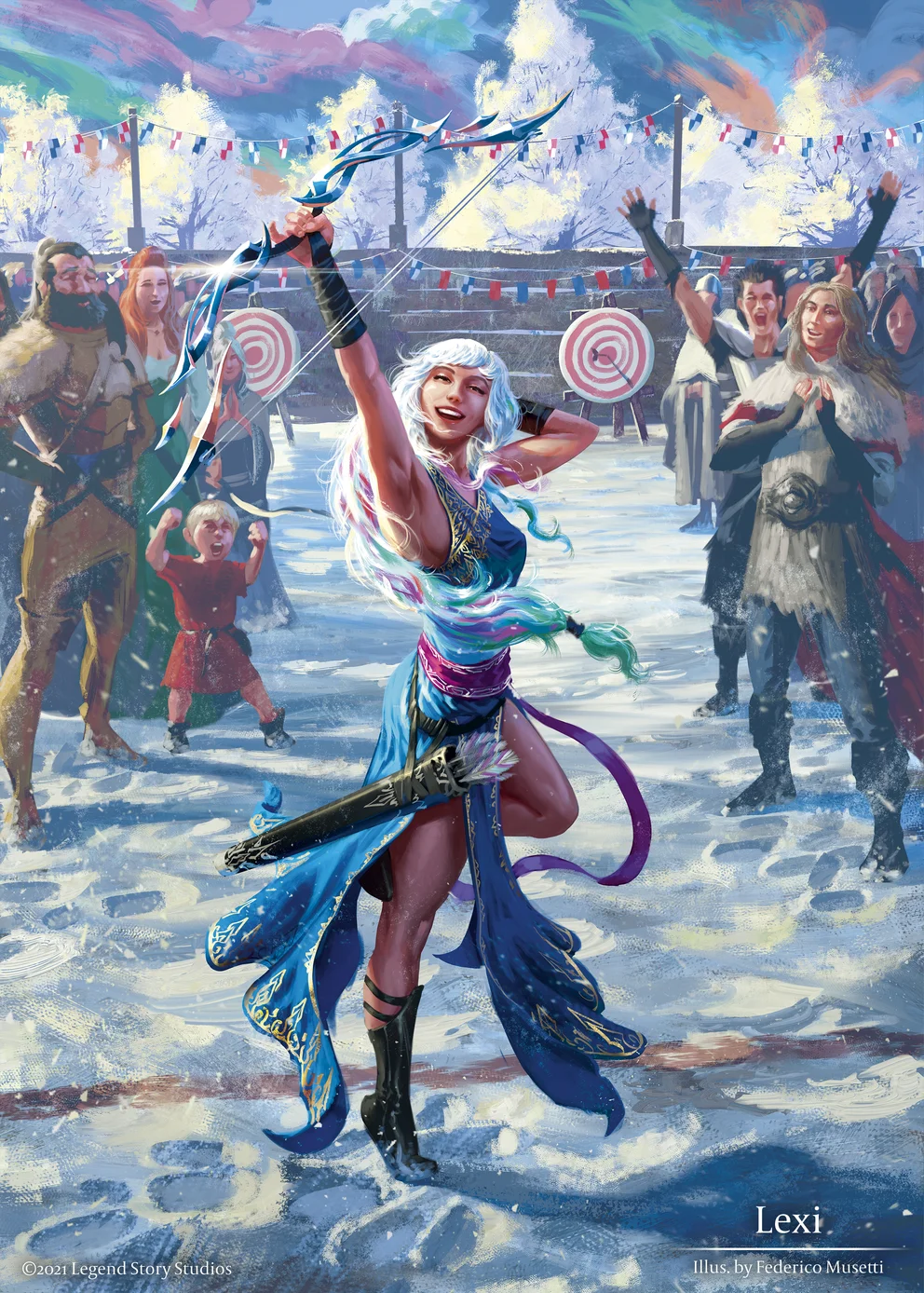
This is an interesting one, because when you’re versing Lexi from the same draft pod, you have a lot of information about the cards that you passed and they might have picked. You have a lot of access to information before you even sit down to play. Let’s say you went for a Lightning based Lexi. Chances are, they got to pick a lot of quality Ice arrows, that you would have not prioritized. With this in mind, you can adjust your list before the game in a way that can help you utilize this information. If you have a hunch they are an Ice heavy deck, simply adjusting your pitch ratio, by adding more blue pitch cards can make it an easier game to play out - this also applies with cards that cost less. Maybe removing those 2 cost attacks in favour of 0 cost attacks could be the way to go. If you think they are Lightning heavy, adding more arrows, or cards that defend for 3 can be a good way to stop those big damage amplification turns. It’s easy to go down the rabbit hole of these assumptions, but I hope some of these points give you an idea on what you can do with the draft information to get an edge in the matchup.
If you’re running an Ice Lexi into a Lighting Lexi, you could throw in some extra arrows, pushing your list above 30 cards. Not only do you give yourself extra 3 defense cards, you’re mitigating the risk of fatiguing out.
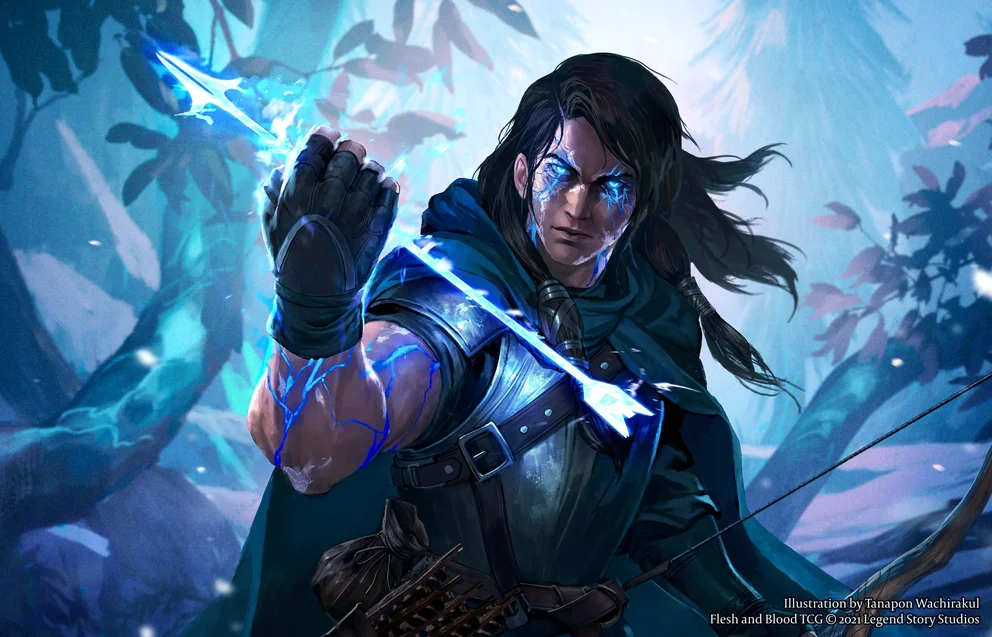
Because each hero has access to two different elements, it’s a bit trickier to pin them down on a particular strategy and leads to complexity in preboarding options. However, the general idea of how each hero works can be a good guide on what works against what and can help you pick some niche, but useful cards in the tail end of a pack. The more you draft this format, the easier it will become to pick up on the subtleties of which cards work better against which heroes. Then, as you grasp the archetypes within those, you can delve even deeper into the preboarding options and further enhance your deck.
